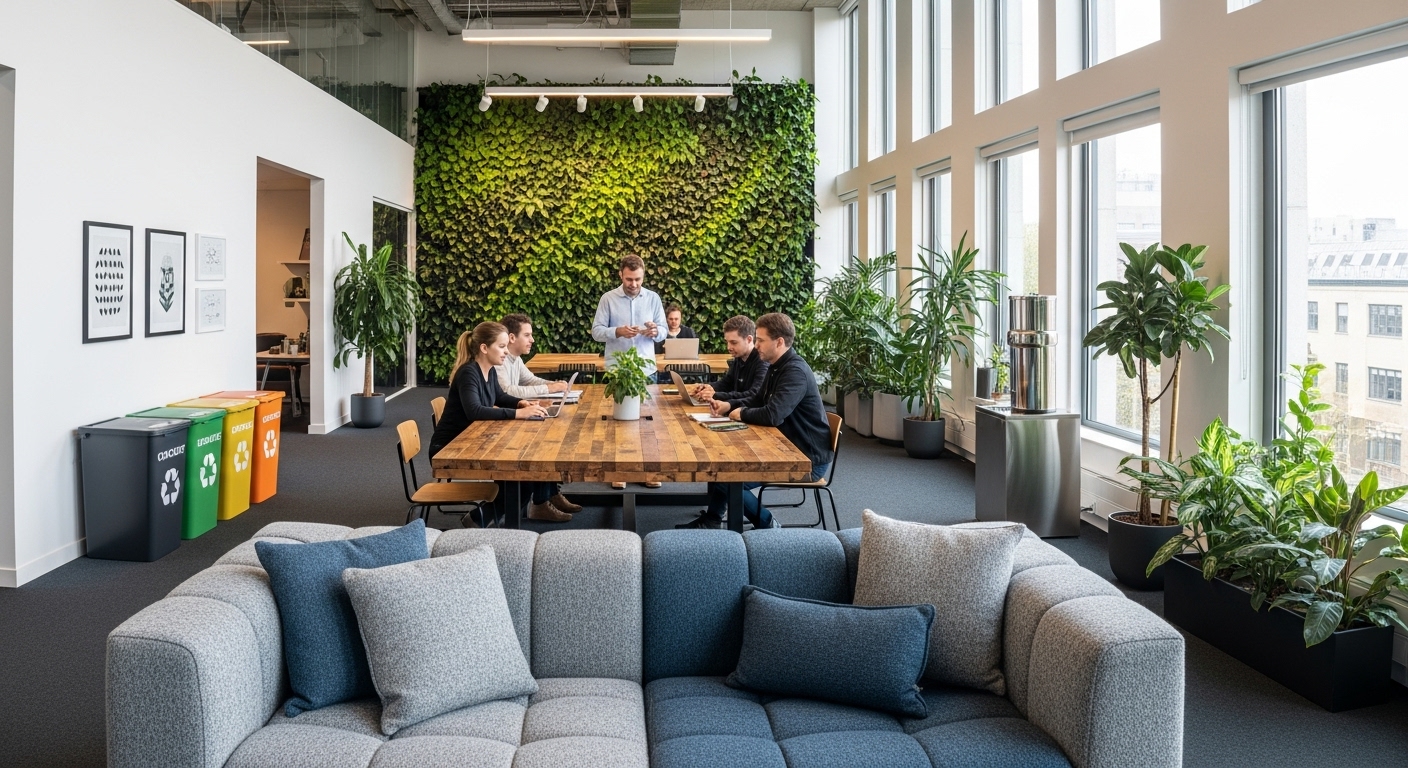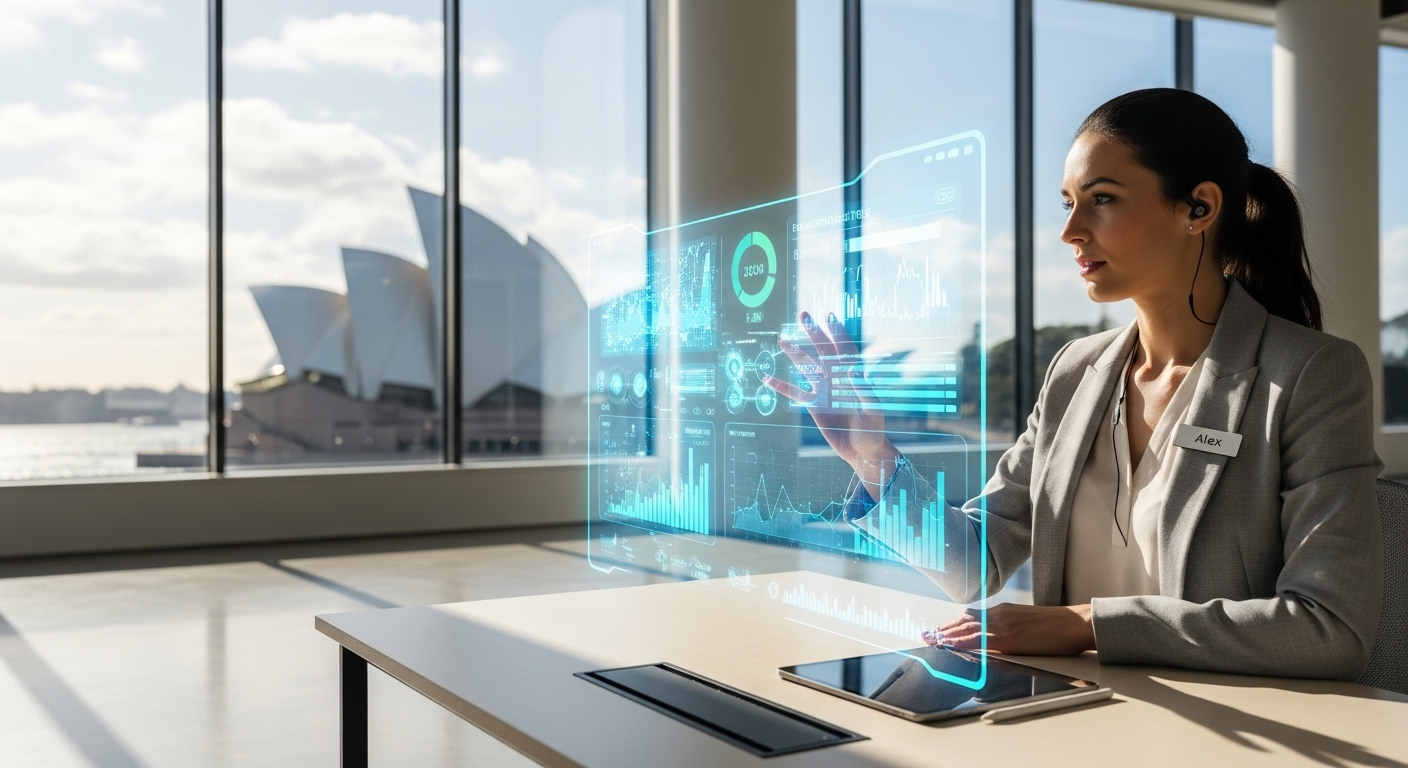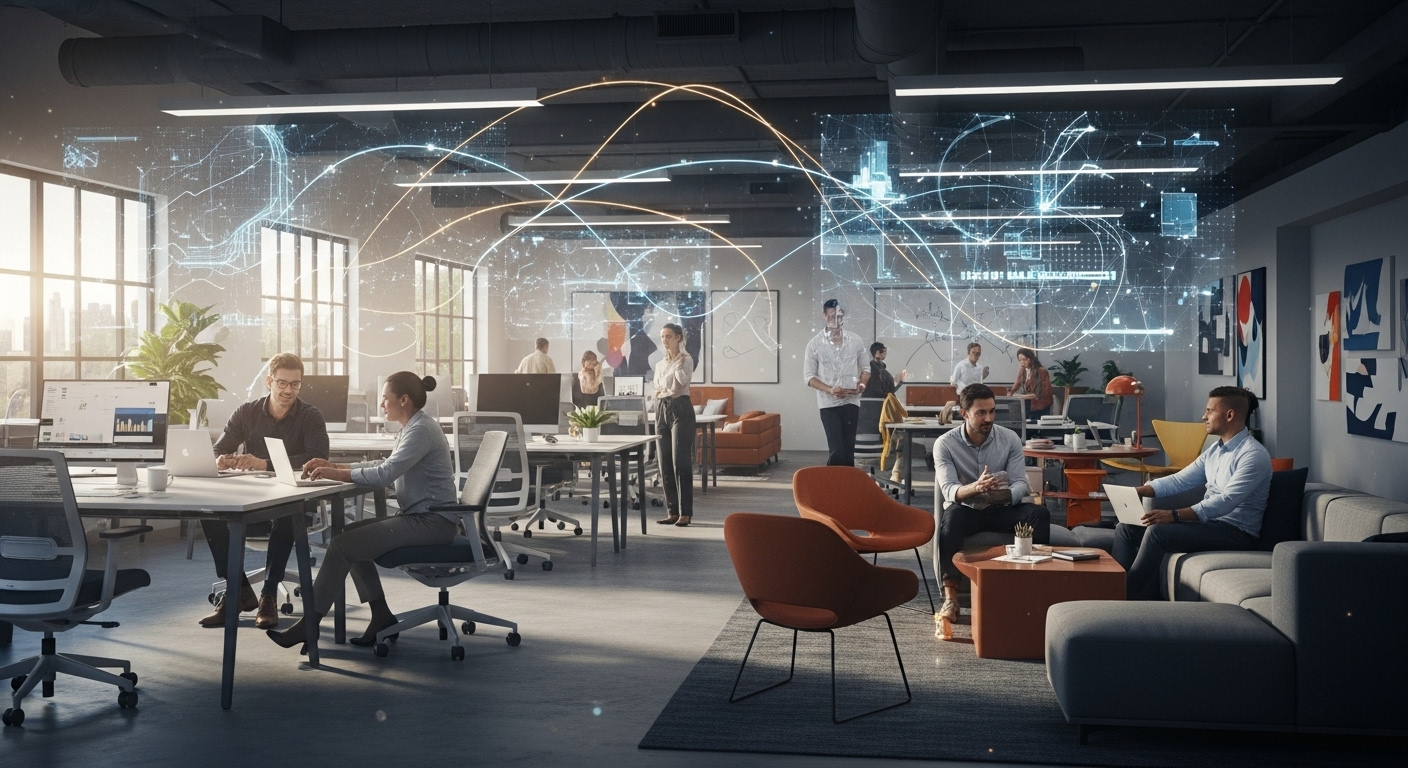The modern workplace is a hub of consumption. From the coffee we drink to the desks we use and the servers that store our data, the traditional office operates on a linear ‘take-make-dispose’ model that generates staggering amounts of waste. According to the EPA, commercial buildings account for a significant portion of landfill waste, and electronic waste is the fastest-growing stream globally. As businesses pivot towards a more responsible future, the concept of sustainability is evolving beyond simple recycling bins and energy-efficient light bulbs. The next frontier is the ‘Circular Office’—a holistic system designed to eliminate waste and pollution, circulate products and materials at their highest value, and regenerate nature. This approach isn’t just about being ‘green’; it’s a strategic framework for building economic resilience, enhancing brand reputation, and creating healthier, more engaging environments. This guide explores the complete lifecycle of a circular office, from intelligent procurement and asset utilization to innovative end-of-life strategies that turn waste into a resource.
Rethinking Procurement: The First Step in the Circular Journey
A truly circular office begins long before a single item enters the building. It starts with procurement. Shifting from a cost-only mindset to a total-cost-of-ownership perspective is critical. This means evaluating suppliers not just on price, but on the entire lifecycle of their products. A key strategy is prioritizing goods made from recycled, renewable, or regenerative materials. This could be office furniture crafted from reclaimed wood, carpets made from recycled fishing nets, or acoustic panels made from post-consumer plastics. Beyond materials, consider the product’s design. Is it built for disassembly and repair? Modular furniture, for example, allows for individual components to be replaced or reconfigured, drastically extending the asset’s lifespan and adapting to changing team needs without a complete overhaul. Another powerful procurement tactic is shifting from ownership to service models, often called Product-as-a-Service (PaaS). Instead of buying printers, laptops, or even lighting, businesses can lease them. This model incentivizes manufacturers to build durable, upgradeable, and easily recyclable products, as they retain ownership and responsibility for the item’s end-of-life. Implementing a supplier scorecard that weighs sustainability criteria—like recycled content percentage, repairability scores, and take-back program availability—can formalize this process and drive the entire supply chain toward more circular practices.
Maximizing Utilization: Designing for Longevity and Adaptability
Once assets are in the office, the focus shifts to maximizing their use and lifespan. The enemy of circularity is the ‘rip and replace’ culture common in corporate renovations. A circular approach champions adaptability and longevity. This is where modular design truly shines. Flexible walls, reconfigurable workstations, and multi-purpose furniture allow the workspace to evolve with the company, avoiding the waste and cost of demolition and reconstruction. This design philosophy must be supported by a culture of care and maintenance. Rather than discarding a scuffed table or a wobbly chair, a circular office has processes for repair and refurbishment. Establishing an on-site ‘repair hub’ or partnering with local artisans can turn maintenance into an employee engagement opportunity. Technology also plays a crucial role. Smart building systems using IoT sensors can optimize resource consumption with incredible precision. Lights can dim automatically in sunlit areas, HVAC systems can adjust based on real-time occupancy, and smart water faucets can prevent waste.
As stated by the Ellen MacArthur Foundation, a leading authority on the circular economy, “By designing out waste and pollution, keeping products and materials in use, and regenerating natural systems, we can reinvent everything.”
This principle applies directly to how we manage and interact with our physical workspace, ensuring every resource is used to its fullest potential for the longest possible time.
The Zero-Waste Kitchen: Fueling Employees Sustainably
The office kitchen and breakroom are often ground zero for disposable culture. From single-use coffee pods to plastic water bottles and takeout containers, these areas generate a disproportionate amount of daily waste. Transforming the kitchen is a tangible and highly visible step toward a circular office. The strategy begins with eliminating single-use items. This means investing in a high-quality coffee machine that uses whole beans, installing a water filtration system to provide sparkling and still water on tap, and providing a full stock of reusable ceramic mugs, glasses, and metal cutlery. To tackle food waste, companies can partner with local, organic suppliers who deliver produce in reusable crates, reducing packaging waste. For catered lunches, work with services that use reusable containers or offer employees a subsidy for using their own. A comprehensive waste sorting system is crucial, going beyond a single recycling bin. Clear, well-labeled stations for compostable organics, mixed recycling, paper, and true landfill waste educate and empower employees to dispose of items correctly. The collected organic waste can then be sent to a local composting facility, turning food scraps into valuable soil instead of methane-producing landfill fodder. This not only dramatically cuts down on waste but also promotes a healthier lifestyle for employees, reinforcing the company’s commitment to both planetary and personal well-being.
Closing the Loop: End-of-Life Strategies for Office Assets
Even in a perfectly managed circular office, assets eventually reach the end of their useful life. In a linear model, this is where items are discarded. In a circular model, this is an opportunity to ‘close the loop’ and feed materials back into the system. The goal is to divert as much as possible from the landfill through a hierarchy of strategies: reuse, refurbish, remanufacture, and recycle. The first and best option is finding a new home for unwanted items. Office furniture, electronics, and supplies that are no longer needed can be donated to local non-profits, schools, or startups. This extends the product’s life and provides a valuable community benefit. For items that are broken or outdated, refurbishment is key. Partnering with specialists who can repair electronics or reupholster furniture can give assets a second life. When an item cannot be reused or refurbished, the focus turns to its constituent materials. This is where those initial procurement decisions pay off. Products designed for disassembly can be easily taken apart, and their components—metals, plastics, wood—can be channeled into the appropriate recycling streams. It’s also vital to engage with suppliers who offer take-back programs, creating a closed-loop system where they are responsible for recycling or remanufacturing the products they once sold. This final stage is what truly differentiates a circular office from one that simply recycles; it’s a planned, strategic approach to resource recovery.
The Digital Circular Economy: Taming E-Waste and Cloud Sprawl
Sustainability extends beyond the physical realm into the digital. The carbon footprint of our digital infrastructure—from the manufacturing of devices to the energy-guzzling data centers that power the cloud—is immense. A circular approach must address this digital waste. The first principle is extending the lifespan of electronics. Instead of automatic two-year replacement cycles for laptops and phones, implement a policy of repair and upgrading. Often, a simple RAM upgrade or battery replacement can add years to a device’s usability. When devices truly reach their end-of-life, responsible e-waste recycling is non-negotiable. This means partnering with certified e-waste recyclers who can safely extract precious materials and dispose of hazardous components. Beyond hardware, we must consider our data. Every file stored in the cloud, every email sent, and every software application running requires energy from a data center. The concept of ‘digital sobriety’ encourages businesses to be more mindful of their digital consumption. This involves regularly auditing and deleting redundant data, optimizing code for efficiency, choosing cloud providers powered by renewable energy, and encouraging employees to reduce unnecessary digital communication. By taming both physical e-waste and digital sprawl, a business can address a significant and often overlooked aspect of its environmental impact, creating a more holistic circular strategy.
Cultivating a Circular Culture: Engaging Employees as Sustainability Stewards
A circular office framework is only as effective as the people who participate in it. Technology and design can enable sustainable choices, but lasting change requires a cultural shift where employees are engaged and empowered as active stewards of the program. This begins with clear communication and education. Employees need to understand the ‘why’ behind the circular initiatives, not just the ‘what’. Regular workshops, informative signage, and intranet updates can explain the impact of waste reduction and the goals of the circular program. Appointing ‘Sustainability Champions’ or forming a volunteer ‘Green Team’ can create a passionate grassroots network to drive initiatives, gather feedback, and motivate colleagues. Gamification can also be a powerful tool. A little friendly competition between departments to see who can reduce waste the most, or a reward system for employees who suggest innovative circular ideas, can boost engagement and make sustainability fun. Ultimately, transparency is key. Businesses should regularly share metrics on their progress—waste diversion rates, energy savings, materials recycled—to demonstrate the collective impact of everyone’s efforts. When employees see the tangible results of their actions, they become more invested in the process, transforming a corporate policy into a shared value and a source of collective pride. This cultural component is the glue that holds the entire circular office system together.
Conclusion
Transitioning to a circular office is a profound strategic shift that moves beyond surface-level green initiatives. It requires a fundamental rethinking of our relationship with resources, transforming the workplace from a linear path to the landfill into a continuous loop of value. By starting with intelligent procurement that prioritizes longevity and recyclability, we lay the foundation for a sustainable ecosystem. Maximizing the utilization of every asset through adaptable design and a culture of repair extends product lifecycles and minimizes the need for new consumption. Implementing zero-waste strategies in high-traffic areas like the kitchen and creating robust end-of-life plans that prioritize reuse and refurbishment ensures materials are kept in circulation at their highest value. This forward-thinking approach must also encompass our digital footprint, tackling both e-waste and data center energy use. However, the most critical component is human. By cultivating a culture of engaged sustainability stewards, a business can ensure these practices are not just implemented, but embraced. The circular office is more than an environmental responsibility; it is a blueprint for a more resilient, efficient, and human-centric future of work, proving that what is good for the planet can also be great for business and its people.





